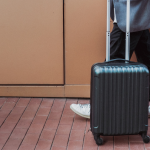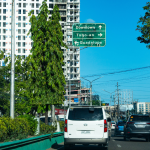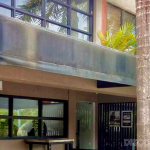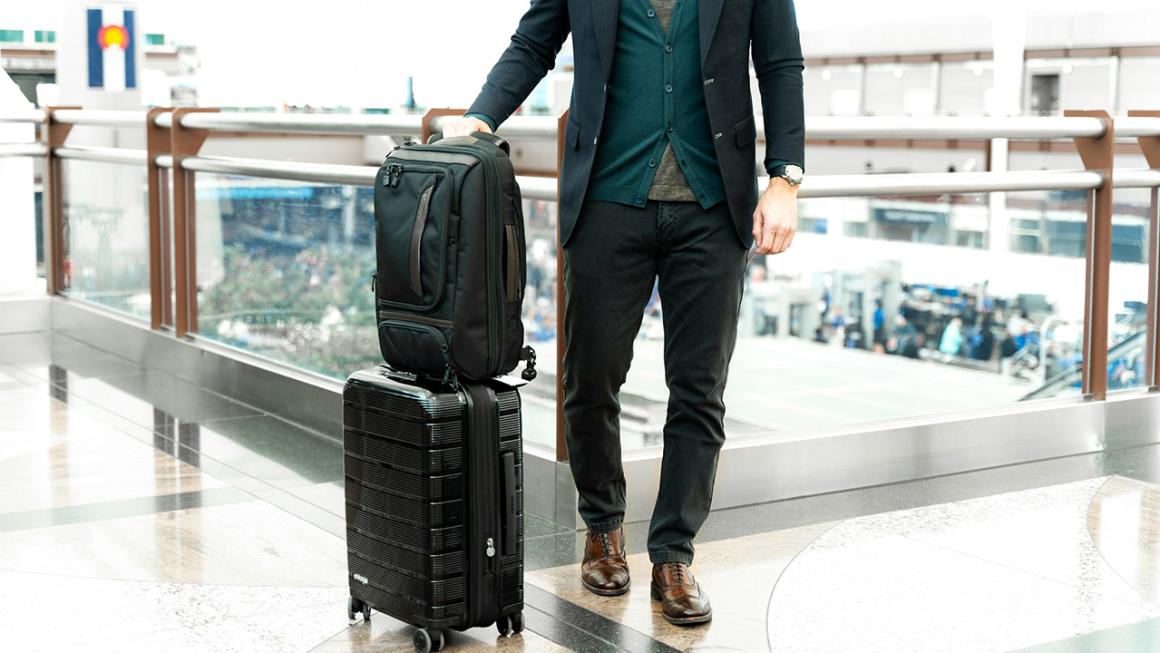Gear up for the wild side with the best hiking shoes for slippery surfaces. Forget broken ankles and bruised egos, the mountains beckon.
The world maps tacked to my apartment walls speak of a thirst that no Netflix binge or bestseller can quite satisfy. I’m a digital nomad, yes, but with a spirit more akin to that of a 19th-century explorer. Not the legions of Instagram influencers. Adventure calls, and I answer. Yet, I’m no reckless heroine out of some Brontë novels. It’s a delicate balance for a solo female traveler—feeding the wanderlust while managing the very real risks that come with it.
Slippery rocks cloaked in moss, a sudden downpour turning the trail into a muddy river—these hazards lay in wait on any good hike. The wrong footwear? That’s a recipe for twisted ankles and a premature end to grand plans. But the right shoes, those carefully chosen for their grippy soles and rock-solid support, become more than mere equipment. I see them as tools of empowerment. They’re how I safely tread further, discovering those hidden waterfalls.
So, fellow female adventurers with laptops in our backpacks and a touch of sensible caution in our souls, this guide to the best hiking shoes for slippery surfaces is for you.
Why Hiking Footwear Matters (Even for Casual Explorers)
I’ve always been more of a bookish introvert, the type who’d rather curl up with a Murakami novel than scale a mountainside. But living in Cebu, the pull of stunning trails and weekend getaways is undeniable. I learned the hard way that venturing out in flimsy sneakers is a recipe for a ruined adventure, not a scene from an REI catalog. It’s here that the importance of proper hiking footwear, even for us casual explorers, becomes painfully clear.
Injury Prevention
Nothing kills the vibe of a scenic hike faster than a twisted ankle. Those picturesque waterfalls lose their charm when you’re nursing a throbbing foot. Good hiking shoes are like armor for your feet and ankles. Supportive midsoles and grippy outsoles are your defense against uneven terrain and slippery rocks. Think of it as an investment in future adventures, not a potential ER trip.
And blisters? They’re the bane of every hiker, from novice to expert. Properly fitting shoes designed for trails significantly reduce this walking nightmare. Because, let’s face it, even the most breathtaking panorama can’t compete with the throbbing pain of a heel blister.
Comfort is Key
Hiking is supposed to be enjoyable. Nevertheless, if your feet are making more noise than a toddler without an iPad, your attention will divert. Good hiking shoes offer cushioning and support, transforming a potentially grueling hike into a pleasant jaunt. I mean, I love a good Netflix binge. But even my worn-in couch can’t compete with the comfort of my well-loved trail shoes.
Durability
As digital nomads, our gear needs to keep up with our ever-changing itinerary. Shoes tossed across continents, enduring dusty trails, sudden downpours, and maybe the occasional cobblestone street require a certain level of grit. Choosing durable hiking shoes designed for the wear and tear of frequent travel means less worry about gear malfunctions and more energy for exploring. After all, the goal is to experience new places, not scramble to find a shoe repair shop in a remote village.
Investing in the best hiking shoes for slippery surfaces isn’t about becoming an Instagram-ready outdoor influencer. It’s about ensuring that our adventures are as safe and enjoyable as possible. Because sometimes the journey itself is just as rewarding as the destination.
And whether you’re summit-bound or strolling Cebu’s photogenic streets, my guide “What To Wear in Cebu For Beautiful, Stunning Photos” has you covered.
Essential Features for Slippery Surface Hiking Shoes

Even the most epic digital vistas pale in comparison to a real sunrise from a mountaintop. But getting there safely requires the right gear. Think of hiking shoes as the foundation of every adventure, and when things get slippery, those foundations better be solid. Here’s my geeky girl’s guide to the crucial features for choosing the best hiking shoes for slippery surfaces:
Outsoles
The outsole of a hiking shoe is its workhorse, the part that makes contact with the unpredictable world. Here’s what to look for:
- Tread Patterns: Think of these like the tire treads on an off-road vehicle. Multi-directional lugs grip in all directions, essential when the trail takes an unexpected turn.
- Lug Depth: Deeper lugs can dig into mud, loose dirt, and slippery rocks. If you’re expecting less-than-ideal terrain, go deeper.
- Rubber Compounds: This is where the shoe scientists have their fun. Some rubber compounds are softer, offering supreme stickiness on wet rocks (hello, river crossings!). Others are harder, prioritizing durability.
Midsole
Sandwiched between the outsole and your feet, the midsole is the hidden hero. Think of this as a suspension of your hiking adventure.
- Cushioning: Every step sends a jolt up your legs. Good cushioning dissipates that impact, saving your joints and making those long miles feel shorter.
- Support: A supportive midsole helps your foot maintain its natural arch and prevents rolling. On uneven terrain, it’s critical. It’s the difference between feeling balanced and agile and one misstep away from a twisted ankle.
Uppers
The upper part of the shoe is all about protection and comfort. It’s your armor against the elements, tailored to your adventure style.
- Waterproof vs. Breathable: Waterproof shoes are a lifesaver in downpours or snow. But on those humid jungle treks, breathable mesh is your friend. Choose based on your most frequent climates.
- Ankle Support: If you’re prone to ankle rolls or tackling serious scrambling routes, high-top boots offer that extra stability. For casual day hikes, low-top shoes provide flexibility and agility.
Remember, choosing the right hiking shoes is as meticulously personal as assembling the perfect bookshelves. Don’t let those slippery slopes stand between you and the next chapter of your journey.
Top-Rated Hiking Shoes for Women
Finding shoes that fit just right is the adventurer’s version of Cinderella’s glass slipper moment. We digital nomads crave that perfect blend of performance, comfort, and, of course, a bit of trail-ready style. And because none of us want to end up hobbling back to our laptops with twisted ankles (been there!), let’s talk about brands doing women’s hiking shoes right, especially when it comes to tackling those treacherously slippery trails.
Brands That Get It: Women-Focused Footwear

Merrell
Merrell is sort of the O.G. of women’s hiking footwear. They offer a vast range of products, from lightweight trail runners to sturdy boots. Their Moab line-up is a classic, especially with Vibram® outsoles for reliable grip. Think of them like your favorite pair of jeans—dependable but maybe a touch predictable at times.

Salomon
If you’re in the mood for a tech-forward, Euro-chic aesthetic, Salomon is the brand for you. Their focus on trail running translates to superbly lightweight shoes that feel nimble even on gnarly terrain. The Contagrip® outsole technology on the X Ultra 4 is truly exceptional for scrambling up slick rocks. For me, they’re the espresso shot to Merrell’s dependable cup of drip coffee.

Hoka
Hoka embodies the essence of minimalist cushioning for off-road use. Their chunky-soled hikers (I love the Anacapa Mid!) prioritize comfort. But don’t be fooled. Those Vibram® Megagrip outsoles offer serious traction. If you’re like me and your feet protest after a long day on the trail, Hoka is the memory foam pillow for your adventures.
Bang for Your Buck: Budget-Friendly Champs
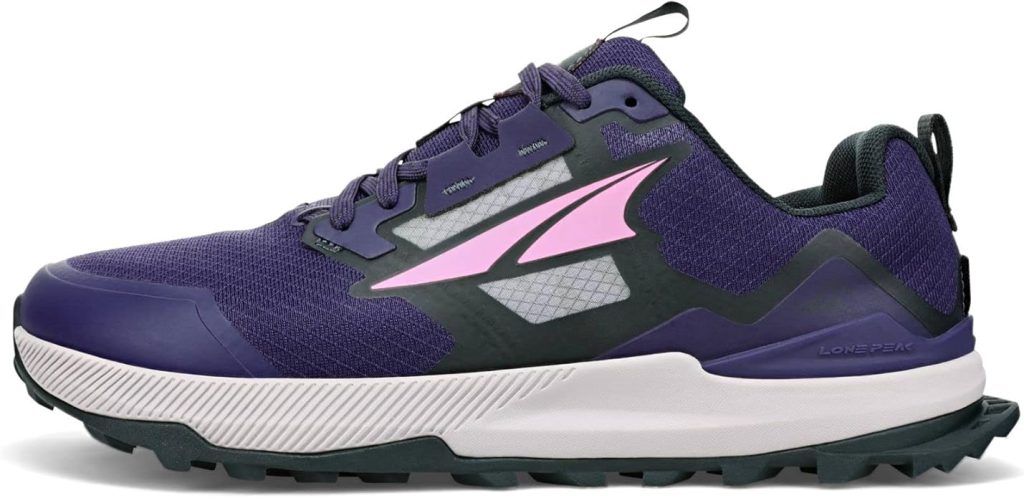
Altra
Zero-drop soles, wide toe boxes—Altra is all about letting your feet do their natural thing. Their Lone Peak trail runners are a cult favorite for a reason. They feel barefoot-adjacent, yet they still offer protection and a surprisingly decent grip. If you’re a minimalist at heart, these are worth checking out.

Keen
Keen’s wide toe boxes and quirky looks aren’t for everyone (kind of like that Marmite toast trend). However, their shoes are durable and frequently provide excellent value for your money. Look for their models with KEEN.POLAR TRACTION outsoles when prioritizing slippery terrain.
Remember, price doesn’t always equal performance. It’s about finding a shoe that speaks to your feet, your hiking style, and, yes, even your budget. Similar to a well-crafted novel, one can always uncover the ideal, unexplored treasure.
Shoe Types for Specific Terrains
Each terrain demands a different kind of support and protection. I’m here to sort through the gear jargon for you, fellow coffee-loving, mindful digital nomads. Let’s conquer those trails, shall we?
Tackling Wet Trails: Shoes Designed for Mud and Creek Crossings

Salomon Speedcross 6 GTX Women’s Trail Running Shoes
Imagine hiking in flip-flops when the monsoon hits. I’ve been there, and trust me, it’s not in any self-help guru’s guide to “finding your zen.” We need shoes that dance through mud, not sink into it. Enter the Salomon Speedcross: Aggressive lugs, like mini tank treads, cut through muck. Their waterproof construction keeps your feet as dry as a martini during happy hour. Trails resembling a post-Apocalyptic water park inspired the design of these shoes.
Rocky Rambles: Shoes for Scrambling, Good Toe Protection
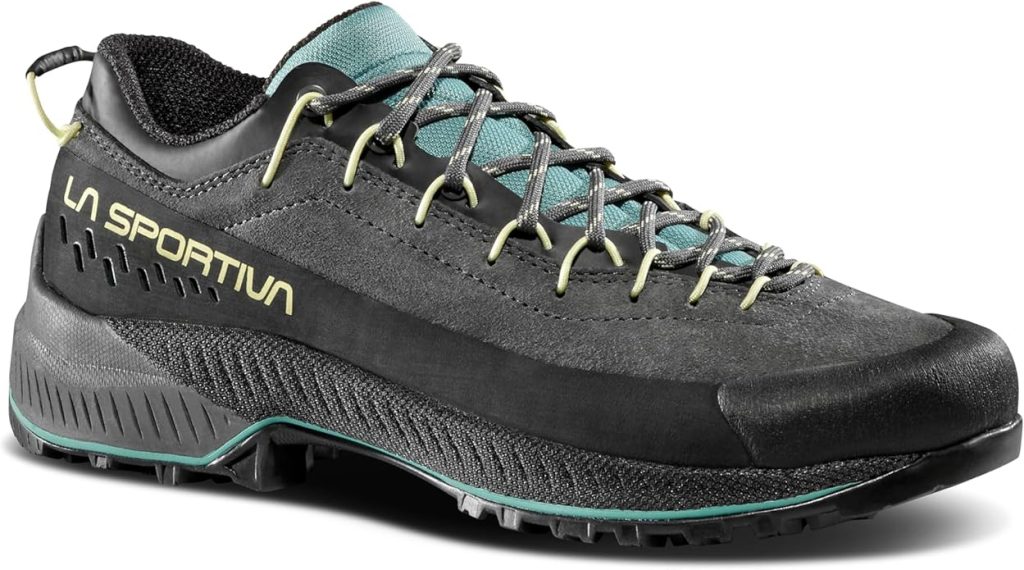
La Sportiva Womens TX4 EVO Leather Technical Approach/Hiking Shoes
Remember that scene from “The Princess Bride” where Westley scales the Cliffs of Insanity? Me neither. I prefer solid ground beneath my feet. But for those who crave a bit of vertical spice, you need rock-climbing shoes disguised as hikers. The La Sportiva TX4 is your secret weapon. Like Spider-Man, sticky rubber soles cling to granite. A reinforced toe cap saves your pedicure from the wrath of angry boulders.
Mixed Terrain: Hybrid Shoes for When Adventures Get Unpredictable
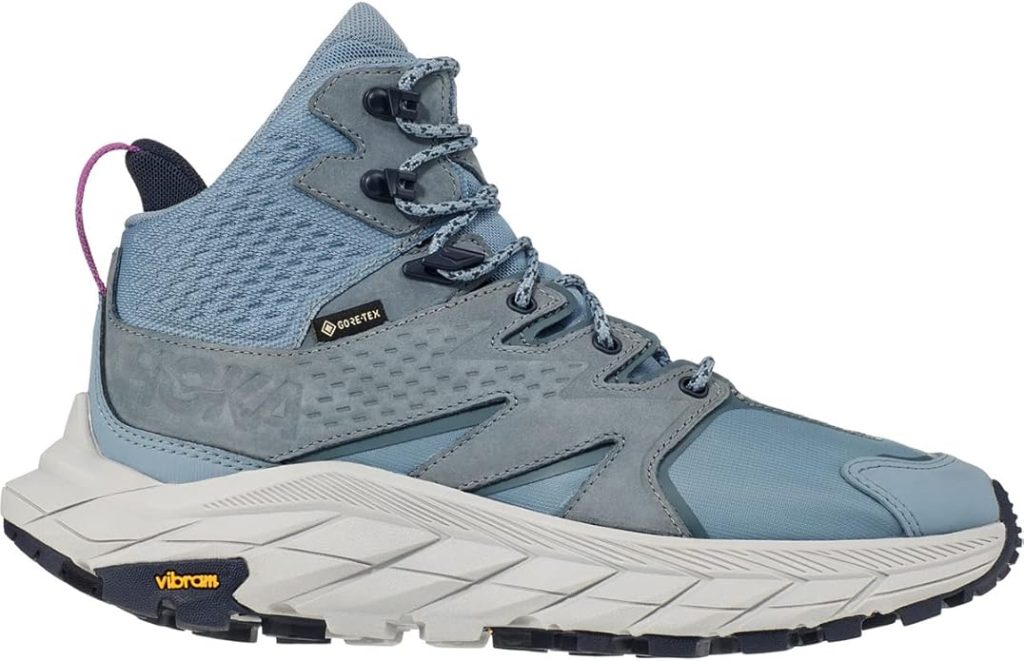
Hoka Women’s Anacapa Mid GTX Hiking Boot
Most of us aren’t trekking Everest on a Tuesday, and thankfully so. On days when our itinerary involves sprinting through a verdant forest and ascending a rocky peak, we require a versatile footwear option. We refer to this creature as the Hoka Anacapa Mid GTX. Its cushioned sole soothes achy feet, while the Vibram MegaGrip outsole tackles slick surfaces better than an octopus in an oil slick. These are your go-to boots when the only certainty is adventure itself.
Remember, the best hiking shoes for slippery surfaces are a wise investment. They’re your passport to exploring more while worrying less. So ditch those worn-out sneakers and let your feet lead the way.
How to Find the Perfect Fit
Finding the perfect hiking shoes has more pitfalls than a poorly marked trail. It’s tempting to fall into the “good enough” trap, especially for us digital nomads. We value a comfy café workspace over a perfectly fitted boot. But ill-fitting shoes on a hike are a recipe for adventure-ending agony.
Finding the best hiking shoes for slippery surfaces isn’t just about knowing your size. It’s magic, science, and a touch of common sense that Cinderella’s Fairy Godmother clearly lacked. So, let’s dive in:
The Afternoon Try-On
Did you know your feet swell throughout the day? It’s some sort of bizarre biological conspiracy to thwart our shoe-buying plans. That’s why an afternoon try-on session is essential. After a day of tackling emails and chasing down reliable Wi-Fi, your feet will be at their mosthonest size.
Thick Socks are Your Friend
Imagine those wooly, hand-knitted socks your aunt gifted you (bless her heart). Those are what hiking socks are like. Chunky, substantial, and critical for finding the right fit. Trying on boots with the thin socks you wear with flats is like building a structurally sound house with toothpicks—it looks fine but collapses under pressure.
Online Ordering Tips
Don’t get me wrong, I love online shopping. But hiking boots? That’s a trust exercise, and the internet can be as reliable as a map from a discount souvenir store. Here’s the deal:
- Size charts are your compass. Use them, but keep in mind that every brand may be speaking its own language.
- Customer reviews are your trailblazers. Look for fellow hikers who have similar fit issues (bunions, high arches, etc.).
- Return policies are your safety net. Make sure they’re generous before you hit “buy.” Sometimes, you just have to try them to know for sure.
Finding the perfect fit takes effort. But like any good book or meticulously brewed coffee, the reward is well worth it.
Additional Safety Gear for the Fearless Female Adventurer
Sometimes even the best hiking shoes for slippery surfaces aren’t enough. As a seasoned nomad, albeit one who treasures a peaceful night in with a good book, I’ve learned that preparation is half the adventure. It’s about calculated risks, not reckless abandon. Think of it as choosing the right operating system. It makes the journey smoother. Here’s my take on essential safety additions for intrepid women on the trail:
Trekking Poles: To Use or Not to Use?
Consider them hiking’s version of coffee. Some swear by them; others find them cumbersome. These aren’t just fancy walking sticks. Trekking poles can be lifesavers. They reduce strain on your knees (especially vital as a woman entering my 40s), improve balance on wobbly terrain, and take the pressure off your feet. They give you extra “limbs” for navigating river crossings. But they do require some coordination, and there’s a learning curve. It’s kind of like getting used to a new keyboard shortcut.
First Aid Kit Essentials: Your Portable Trauma Center
A curated medical kit is non-negotiable. Forget those bulky, generic things. Build your own geared towards blisters, cuts, scrapes, and the occasional sprain. Think minimalist pharmacy: bandages, antiseptic wipes, Moleskin (blister magic), pain medications, maybe a small tensor bandage. I even throw in antihistamine for unexpected bug bites. It’s all about knowing the potential pitfalls of your terrain. Such as that time in Cambodia, when I was hobbling like an extra in a zombie film due to a “slight scratch.”
The Buddy System: Safety in Numbers (Sometimes)
Let me be real: solo adventures are my jam. That feeling of self-reliance, the silence—it resets my internal compass better than any meditation app. But there’s wisdom in teaming up occasionally. An extra pair of eyes never hurts. Someone to assist with a heavy pack or, heaven forbid, a real emergency. Think of it as the difference between reading a gripping novel alone and discussing it with your book club. Both have value, but sometimes shared experience amplifies the takeaway. Plus, let’s admit it, some trails are just more fun with a little witty banter thrown in.
Remember, being prepared doesn’t make you less fearless. It allows that fearlessness to take you further and safer.
Parting Thoughts
Even the most experienced adventurer has made a few rookie mistakes. Mine involved a pair of sliders on a supposedly “easy” rainforest hike. One torrential downpour and a mossy rock later, I was channeling my inner Bambi—not exactly the fearless explorer vibe I’d aimed for.
That experience taught me a hard lesson: the right hiking shoes aren’t a luxury; they’re an absolute necessity. The moment I invested in a sturdy pair built for slippery surfaces, my hikes transformed. My confidence soared. Suddenly, I was tackling trails I’d shied away from before, relishing the challenge rather than fixating on fear.
Don’t let shoddy footwear limit your adventures. Do your research. Find those shoes that make you feel like you could conquer a mountain (or at least a slippery waterfall trail). Your ankles will thank you.



